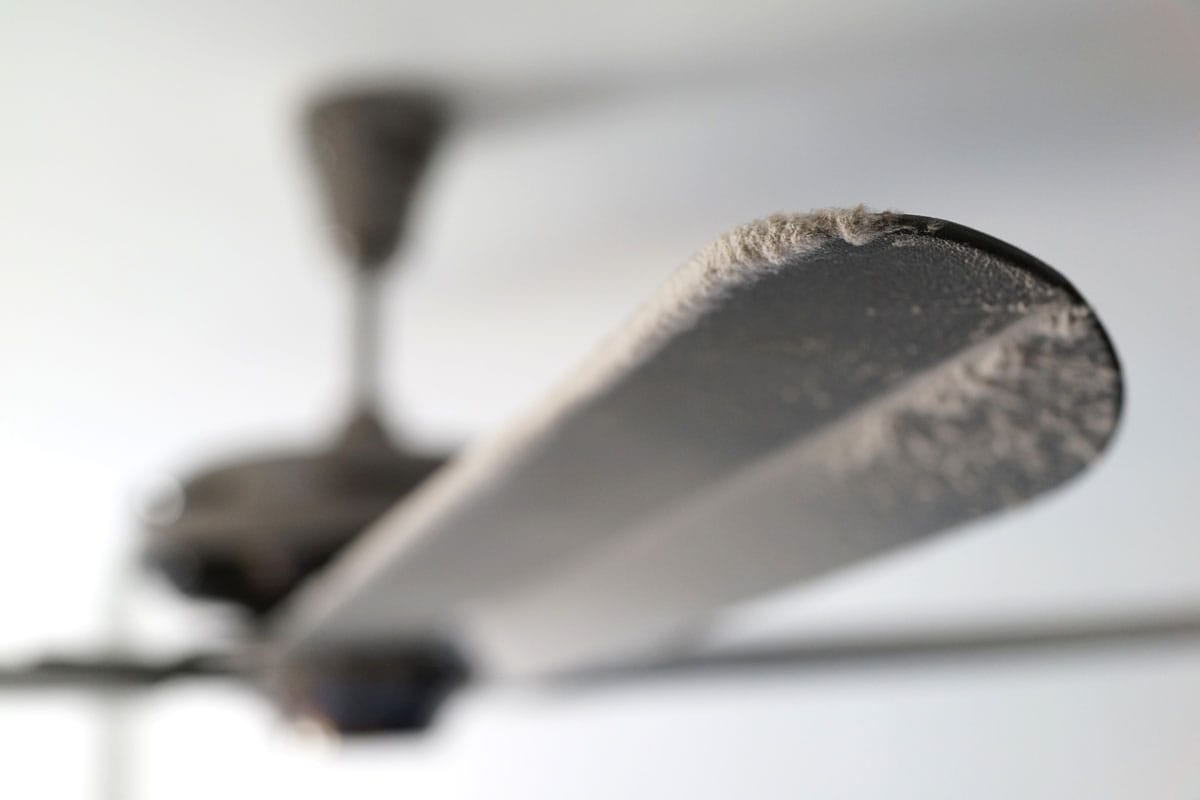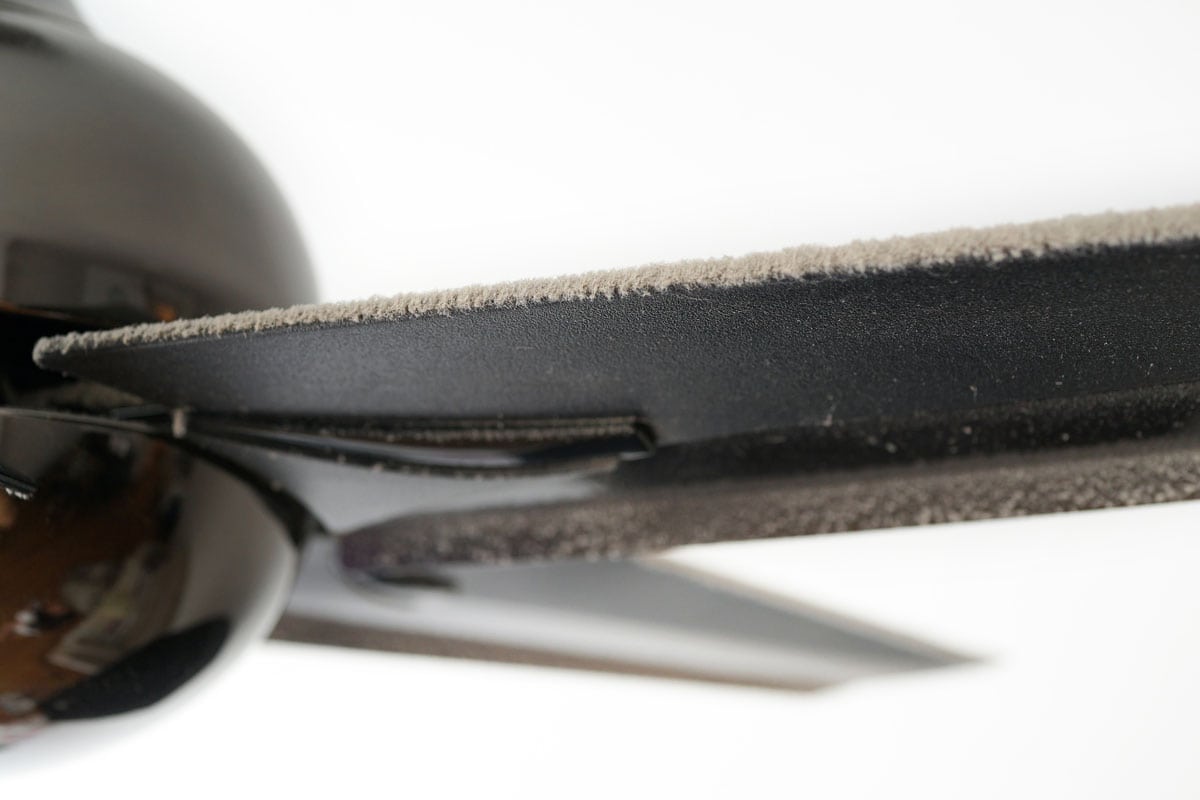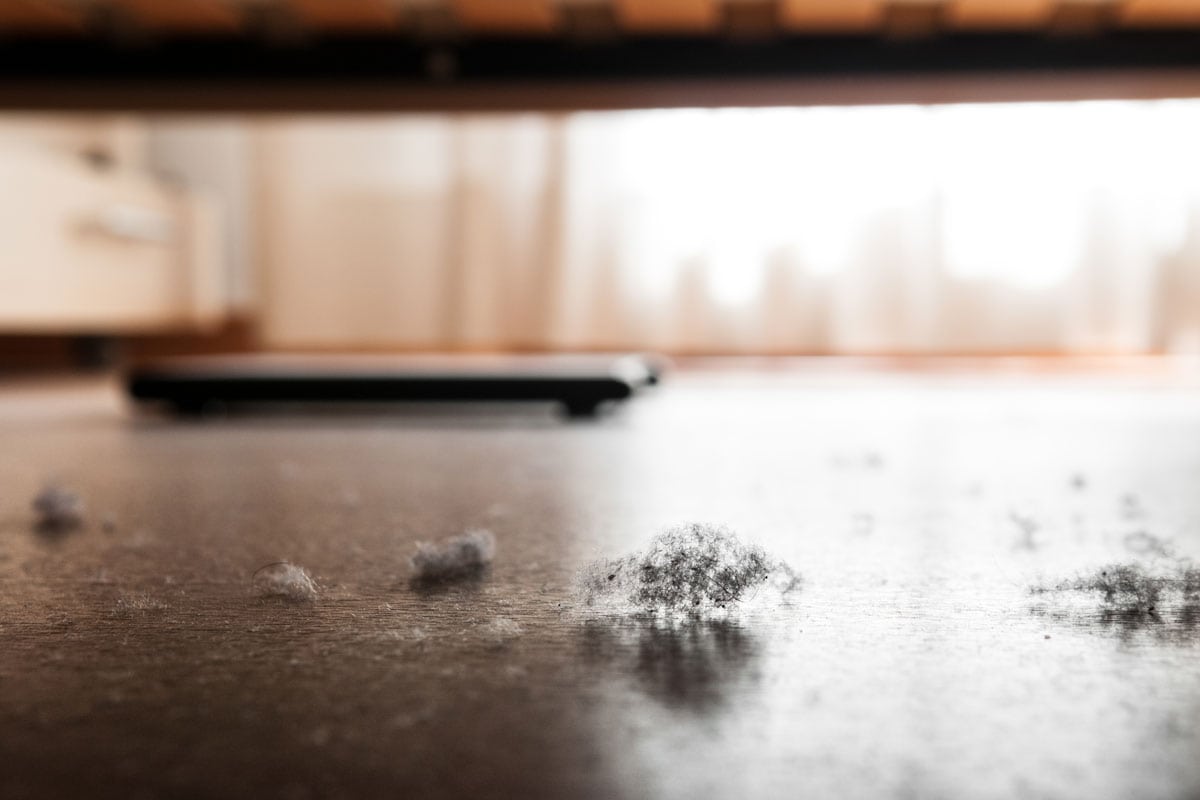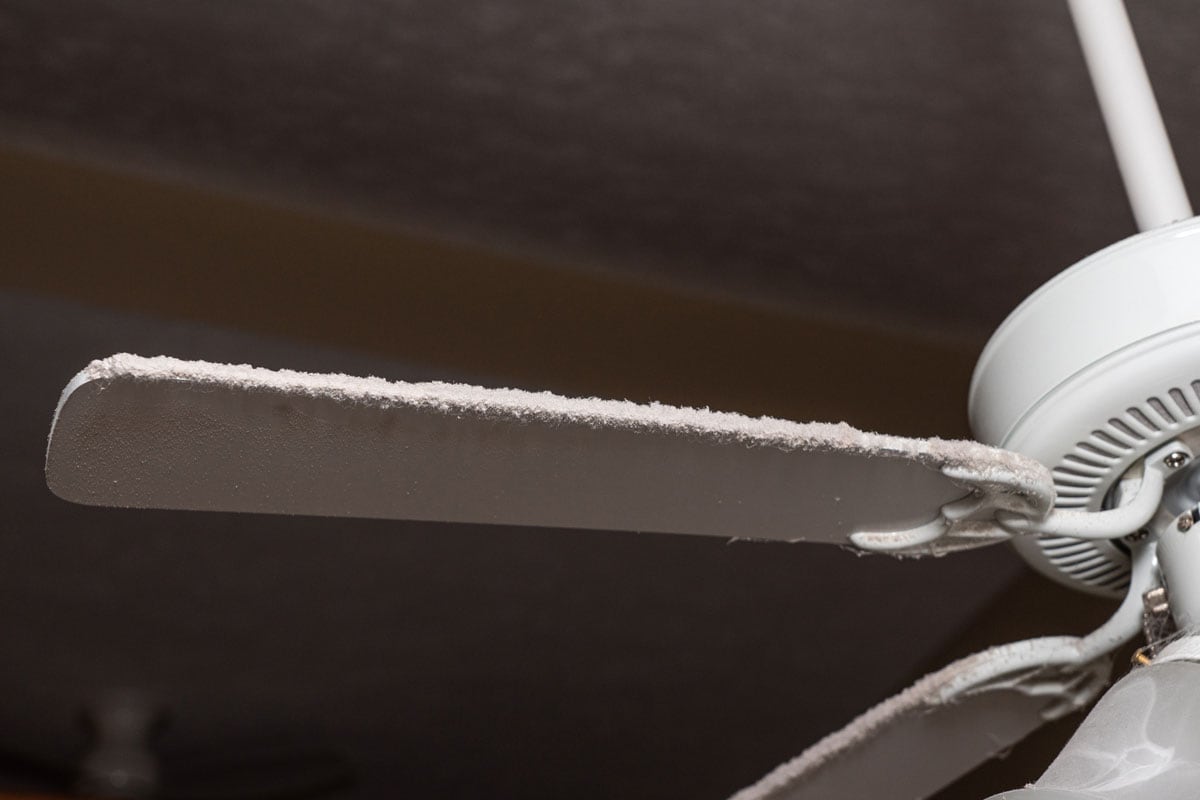Dust can accumulate almost anywhere, even objects in motion, like your ceiling fan. But why do ceiling fans seem to attract so much dust? We've researched this topic thoroughly to get you the answer to this dust-covered conundrum.
The moving blades of the ceiling fans actually attract dust. As they move, they get charged with static electricity due to friction created as they slice through the air.
These blades then attract the dust particles from around the room, accumulating dust on their blades. The state of the room also contributes to how much dust can form on the blades of your fan.
We have gathered information to understand why dust gathers on fans and how to avoid this from happening. We'll also cover dust proofing your house and alternatives for fans that stay less dusty. Read on to get the whole story!

Why are my ceiling fan blades so dusty?
There is a simple scientific explanation for why our ceiling fan blades get so dusty: static electricity. Static electricity occurs as the blades of your fans move through the air quickly. This phenomenon causes the air molecules around the blades to move, thus producing the air that we feel.
Now as these molecules move, they build up an electrical charge, especially on the leading edges of your fan blade. This charge then attracts the dust particles around the air in your room and leads them to accumulate on your blades.
These accumulated dust particles attract even more dust particles as they sit there through time, this then increases the residence of dust on the blades of your fans.
This can be tested through a very simple experiment that you can do by yourself in your house. All you need are two sets of fans, one that is always in use, and one that is barely or even not used at all. You can observe that the more used fan will be the one that will be getting dirtier and dusty compared to the other.

How do I stop my ceiling fan from collecting dust?
As we established, once the dust has already gathered on your blades, it then starts to attract other dust particles. So the quickest fix to having dusty blades is by regularly wiping them.
Of course, safety should always be a priority. When cleaning ceiling fan blades, you should make sure that the switch to your fan is off. If there is another switch that completely turns off electric flow to your fan, then it is even better to use that.
Another fix is by cleaning the room that the fan is in. A dusty room will likely cause your ceiling fan to accumulate dust faster on its blades. So a good remedy is to regularly clean your room. This will not only avoid dust from your blades but is also very hygienic.
Can a dusty ceiling fan make you sick?

Ceiling fan blades do not only accumulate dust but can also spread dust. Dusty and dirty fans can blow out dust and pollen in the air, this is troublesome for people suffering from allergies. If you have asthma or an allergy to dust, a dirty fan can trigger or agitate it and cause asthma or allergy attacks.
The air from a fan can cause congestion, it can dry out your mouth, nose, and throat. Experiencing this may lead to other side effects such as an overproduction of mucus, headaches, and a runny nose. This can leave you feeling sick, especially when the symptoms start.
Another problem is that the wind produced from a ceiling fan can dry out your eyes and skin, leading to irritation. Some fixes include using eye drops and moisturizers. One cause of dry skin is also dehydration, so make sure to drink plenty of water!
You can also experience muscle aches from a concentrated circulating air. This may cause some of your muscles to tighten up and lead to cramps, especially when sleeping.
Sleeping without a shirt on and turning your back in the direction of the wind can also cause muscle tension in your back. This can be remedied by finding a position where the fan is not blowing on you directly. If you are trying to cool off, make sure to not stay too long directly under the fan.
How often should you dust a ceiling fan?

Dusting your fan depends on how often it is in use. If you are using it daily, dusting it once a week or every two weeks will suffice.
If the fan is also located in a high-traffic part of your house or a room with many other house appliances, it may get dusty faster. This is because it can easily collect the dust from the other objects near it.
Regularly cleaning your fan does not only give you dustless blades but also keeps the fan functioning well. Too much build-up of dust can affect the performance and efficiency of your ceiling fan. Dust particles can get into the mechanism of your fan's motor, which can then add more strain to it.
Improperly working fans can use more energy, which translates to higher electricity bills. Dusty ceiling fans also produce weaker air and continued disruption in the mechanisms of your fan may eventually lead it to break down.
Cleaning your ceiling fan also serves other uses. When cleaning it, you can notice if there are already broken parts, which can't be seen by just looking at it from the ceiling. This can help you identify and fix problems early, saving you money on more costly repairs.
What are other alternatives for ceiling fans?

There are many alternatives for fans when it comes to insulating or cooling your house. One of the most popular is switching to an air conditioning system. Not only is it better at cooling, but it is also more convenient, especially in hotter climates.
When summer hits, sometimes a fan just isn't enough to cool down. If the temperature is too high, having a fan pointed to you can even make it even worse as it can spew out hot air.
An air conditioner is much more effective at cooling in high heat and requires less cleaning than a fan.
Some AC also offers dual-zone air systems, meaning that they can produce not just cool air but also hot air. This gives you climate control during both hot and cold days.
But of course, an AC system is much more expensive compared to a ceiling fan. In some cases, they also require professional services to be installed and cleaned.
Air conditioners also have more complex moving parts compared to fans. On top of that, they also consume more electricity. Despite these drawbacks, air conditioners are a great alternative to fans.
How do I dustproof my house?

You can never fully dustproof your house but you can greatly reduce it. Regular cleaning is the best way to avoid dust buildup in your house.
Methods such as closing the window, reducing the number of carpets in your house, grooming your pets, and getting a humidifier are just some of the things that you can do to have a dustproof house.
Having a reliable vacuum cleaner is one of the best investments you can have for your home. They are a great tool for cleaning up and sucking the dirt out of your floors, curtains, couches, and any other surfaces that has dust on them.
Does a humidifier get rid of dust?
Humidifiers also help reduce dust. They do this by increasing the amount of moisture in your house.
Moisture makes the air damp, this prevents dust particles to be airborne by weighing them down. It also causes dust particles to clump, making it harder for them to spread through the air.
Click here to see air humidifiers on Amazon
In review

Simply put, dust accumulates on almost anything in our houses. With ceiling fans, the constant moving of the blades causes static electricity that draws dust in.
Even if you are not using your ceiling fan often, it will still gather dust over time. Upgrading to another cooling system like an AC is also a great option to avoid the problems of dust on your fan blades.
Interested in learning more about ceiling fans? Check out these great articles!
Ceiling Fan Not Working On All Speeds – What To Do?
Can You Mount A Ceiling Fan Directly To A Joist? [And How To]

